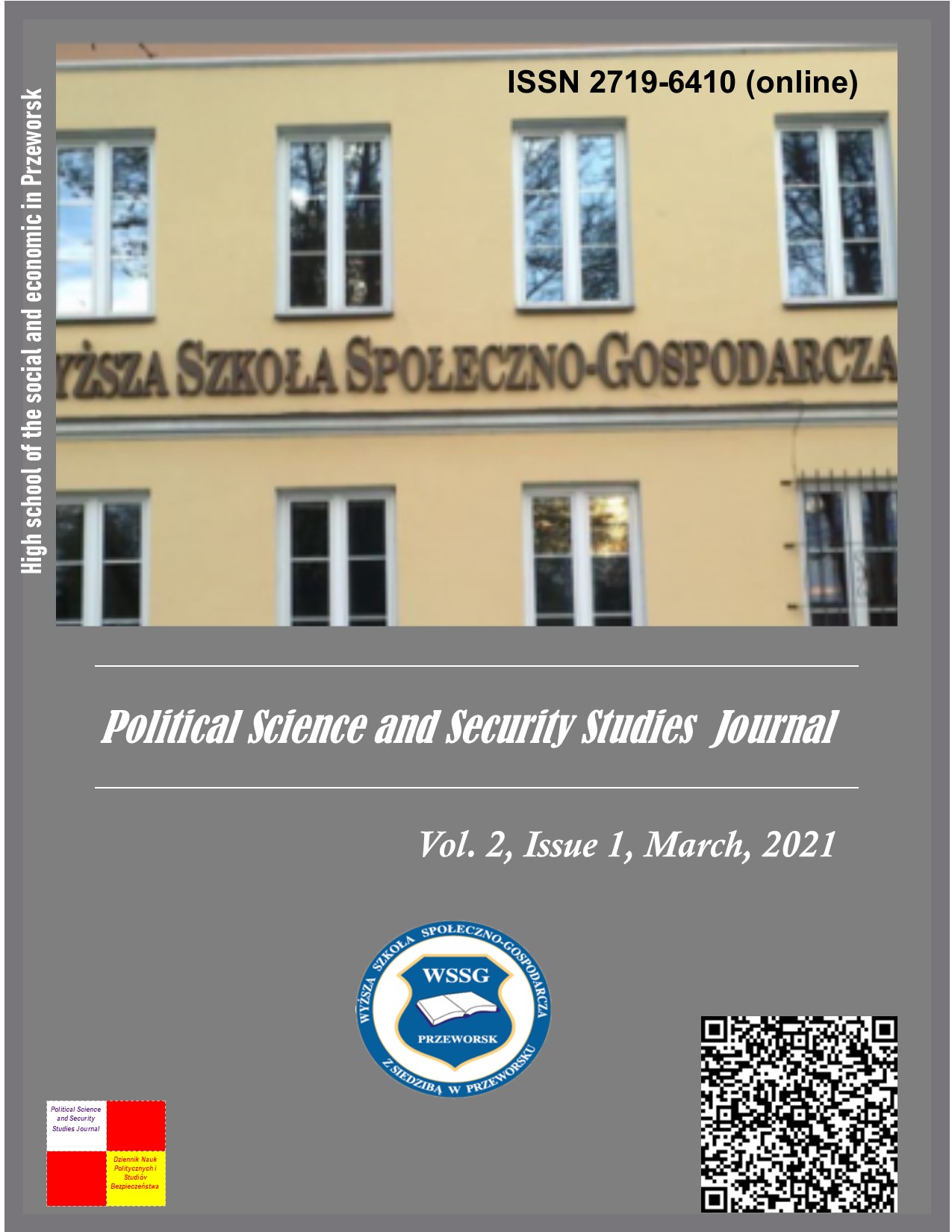Separatism as the final form of the secession and its influence on the maternal states’ future development
DOI:
https://doi.org/10.5281/zenodo.4642365Abstract
In the article the problems with regard to the manifestations of secessionism at the present stage, provide recommendations for combating them have been investigated. The role and place of the world community in counteracting the manifestations of secessionism and the prevention of territorial conflicts on the world scene have been taken into account. It is argued that the primary possible step in resolving conflicts is, firstly, the use of nonviolent measures, political and diplomatic settlement, and the achievement of stability in any state is possible only in the conditions of maintaining the principles of social justice, regardless of territorial identity.
It can be argued that the peculiarities of the origin and development of the separatism centres in the world influence the political and geographical position of the territory. In addition, experts note that the effective counteraction to separatism is to create exactly the conditions under which effective management of disintegration processes is carried out. It seems that the idea of separation loses its popularity over time. In the Donbas, Ukraine deals with hybrid separatism, which is part of the hybrid war of the Russian Federation. According to the researches of the National Institute for Strategic Studies under the President of Ukraine, its basis is political separatism, which is based on the distortion of information, application of special propaganda measures, distortion of the history of Ukraine and myths about a better life in the format of self-proclaimed republics, etc. It is clear that this conflict must end. However, scientists warn against the use of negative experience in resolving such confrontations, especially in Ukraine. It should also be noted that despite the presence of varying levels of ethnicity in secessionist processes in Ukraine, it cannot be considered decisive or fundamental.
Downloads
References
Divak, V. V. (2010). Separativeness as a phenomenon of modern politics, Logos,p 223.
Gorbulin, V., Vlasyuk, O., Libanova, E., & Lyashenko, O. (2015). Donbass and Crimea: The price of return: monograph.
Kresina, І. О. (2014). Political and legal mechanisms for the prevention of separatism in a democratic society, Science Notes, pp 143.
Lipkan, V. A. Essence of hybrid war against Ukraine, Global organization of allied leadership. Retrieved from http://goal-int.org/sutnist-gibridnoi-vijni-proti-ukraini.
Osipova, S. A. (2011). Unrecognized states of the political and legal phenomenon: theoretical and methodological aspect, Visnyk of SevNTU: Sb. sciences works Sir Politology, (123) 124-127.
Panova, V. (2005). Modern Western Studies of International Conflict. International processes, Journal of the theory of international relations and world politics, 2(8) 53-65
Popov, F. A. (2011). Secessionism as a Security Threat, Journal Eastern Analysts, 84-93,
Radetskyi, V. G. (2009). The basis of the national security and defence strategy of the state, Kyiv p 225
Riegl, M. (2014). Prospect sand limits of economic development of unrecognized states: between organized hypocrisy and private interests, European Scientific Journal, 10(4) 17-35.
Segeda, S. P., Shchipanskyi, P. (2018). In The Hybrid War of the Russian Federation Against Ukraine in Scientific Discourse Ukrainian Army: Contemporary and Historical Retrospective, The Collection of Materials of the Third All-Ukrainian Scientific and Practical Conference, NUOU, 38-48.
Trembovetskyi, O. G., Hulevatyi, D.YU. (2018). Analysis and features of military-political risks, challenges and threats at the state border. Collection of scientific works of the Kharkiv National University of Air Forces, (1) 23-29.
Tsebenko, O. A. (2015). International legal issues of struggle with separatism, Law and life, International scientific and practical law journal, Chisinau, 8(2)100-104.
Tsebenko, O. A. (2017). The phenomenon of separatism in modern international relations, Humanitarian vision, 3(1) 55-60.
Published
How to Cite
Issue
Section
License
The authors agree with the following conditions:
1. Authors retain copyright and grant the journal right of first publication (Download agreement) with the work simultaneously licensed under a Creative Commons Attribution License that allows others to share the work with an acknowledgment of the work's authorship and initial publication in this journal.
2. Authors have the right to complete individual additional agreements for the non-exclusive spreading of the journal’s published version of the work (for example, to post work in the electronic repository of the institution or to publish it as part of a monograph), with the reference to the first publication of the work in this journal.
3. Journal’s politics allows and encourages the placement on the Internet (for example, in the repositories of institutions, personal websites, SSRN, ResearchGate, MPRA, SSOAR, etc.) manuscript of the work by the authors, before and during the process of viewing it by this journal, because it can lead to a productive research discussion and positively affect the efficiency and dynamics of citing the published work (see The Effect of Open Access).















